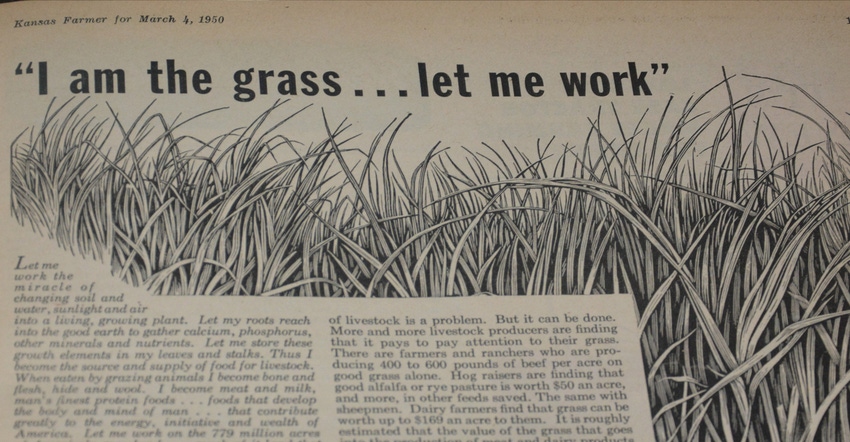January 30, 2020

The value of grassland as forage for livestock to create an adequate supply of protein for the human diet was highlighted 70 years ago in the spring of 1950. An article in the March 4, 1950, Kansas Farmer noted that “through meat animals you can utilize grass and roughages to create quality protein foods for human use and that 80% of the growth elements in grass that is grazed and returned to the soil as manure.”
The value of grass in controlling wind and water erosion and its role in restoring organic matter to the soil were also noted.
65 years ago
Farm scientists were touting cattails as a new farm crop in March of 1955.
Two Syracuse University plant scientists in New York predicted that harvesting cattails would become a highly profitable business, making swampland as valuable “as some of the golden wheat fields of the Midwest.”
They reported 12 products from cattails, including the roots, which they said could be eaten whole like potatoes or ground into flour for baking. The flour, they said, could be fermented to produce ethyl alcohol. The roots could be used for fibers for caulking barrels, while the leaves could be used for rush furniture, baskets or maps, and the fluffy portion of the flowers could be used in lifejackets or to stuff baseballs or mattresses.
Just a comment: A mattress with all the cushioning of a baseball apparently never took off. I wonder why?
55 years ago
USDA was warning about the threat of trichomoniasis in western beef herds. The disease, which is spread by infected bulls, causes abortion and infertility in cows.
Unless treated, bulls have the disease for life. Cows can recover if separated from infected bulls for three months. The recommended management was examination and removal of all infected bulls.
30 years ago
A new variety of little bluestem grass called Cimarron was released in the spring of 1990 by the USDA Soil Conservation Service and the Kansas State University Agricultural Experiment Station.
It was developed to be used in mixtures of grasses on rangeland, roadsides, embankments and other areas of native vegetation, particularly in western and central Kansas, Nebraska, Oklahoma, Colorado and Texas where rainfall is low.
Under dryland conditions, Cimarron is taller and produces more forage than other little bluestems, and its protein content was the highest of all little bluestems in dryland tests in Nebraska.
Goerzen is the executive director of Old Cowtown Museum in Wichita.
About the Author(s)
You May Also Like




